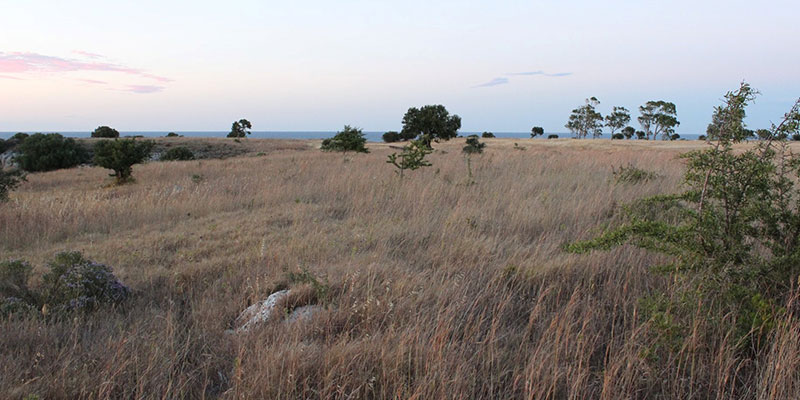
LASPEH Project is developing a transnational common strategy to preserve common habitats and species in Italy, Albania and Montenegro. But what are they? Here is an insight on the pseudo-steppe.
The Mediterranean pseudo-steppe is one of the most singular and extraordinary habitats within Puglia and the area of the Park of Coastal Dunes. It can be usually found close to fossil dunes (born between 100.000 and 6.000 years ago) placed less than 200 metres far from the coast, beyond State Highway 379.
Pseudo-steppe is a species of vegetation similar to Eurasian steppe. It grows in areas characterised by Mediterranean climate, on solid and stony soils, where a minimum quantity of terrain sediments (while, on the emerging rocks, lichen - early stage of the vegetal colonisation - can be observed). Its name comes from “Stipa Austroitalica” (from Latin stipe that means straw and auster that is wind blowing from the south), commonly known as “feather grass”. Pastures and fires have supported the development of the typical vegetation of this area; on the contrary, if undisturbed, it develops into garrigue, macchia and then wood.
Fossil dunes are arid during summer but, during spring, they are in flower, colourful and full of wild orchids, among which we can find “Serapide pugliese” (serapias orientalis apulica), a rare endemic species of orchids.
In this kind of habitat, the height of vegetation is rather limited and discontinuous. In these conditions, large animals could be easily seen and, therefore, there are none. However, a great number of small and medium-sized animals can be found, especially insects and birds. Calandrella, larks, crested larks and woodlarks belong to a family particularly close to steppe because of its terricolous habits. Another group of interest is that of birds of prey: in addition to sparrowhawk, red kite, black kite, short-toed snake eagle and lanner falcon, we can find also small falcons, among which there is the lesser kestrel, who mainly feeds with invertebrate species hunting with “the holy spirit technique”.
These habitats of great naturalistic and landscape value are involved in the Project LASPEH, which aims at defining a common strategy to preserve the natural and landscape heritage of the Low-Adriatic area (in particular in Italy, Albania and Montenegro) in order to face the loss of biodiversity. Particular attention will be given to species protected by directives 92/43/CEE and 79/409/ CEE, typical of these eco-regions threatened by changing environmental conditions, caused by climate changes and bad management.
LASPEH Project, funded by the Interreg IPA CBC Italy-Albania-Montenegro Programme under the Priority Axis 3 (Environment protection, risk management and low carbon strategy) of the Programme, will implement a network of organisations cooperating for a better management of priority species in Natura 2000 sites, exchanging their best practices and developing a transnational common strategy to preserve common habitats and species.
Discover more about LASPEH:




